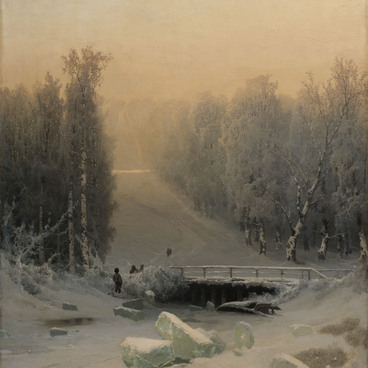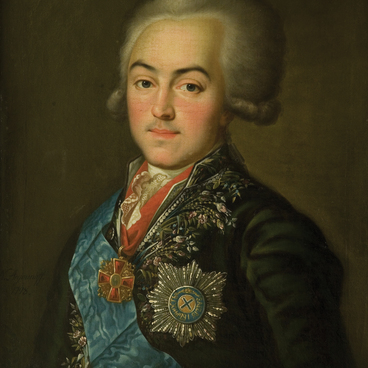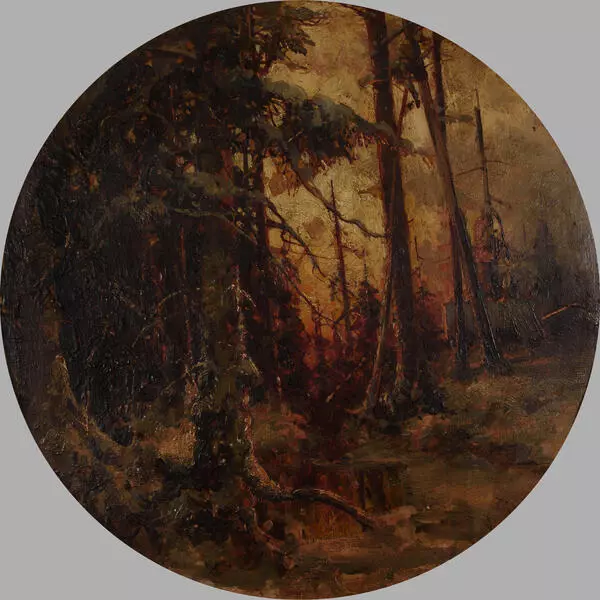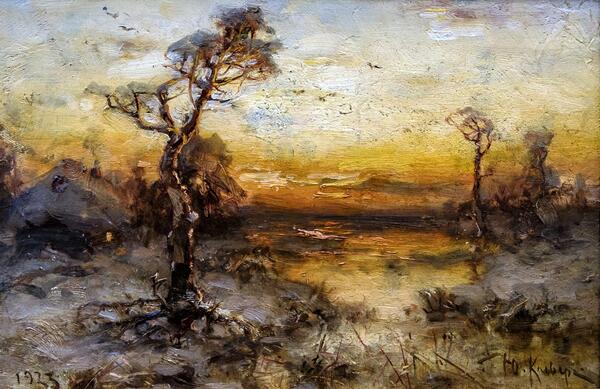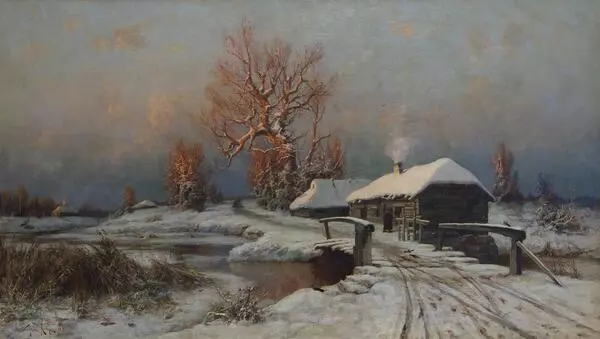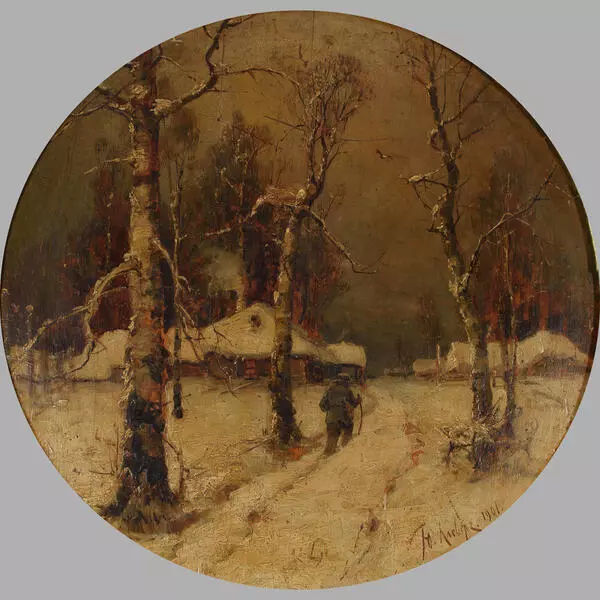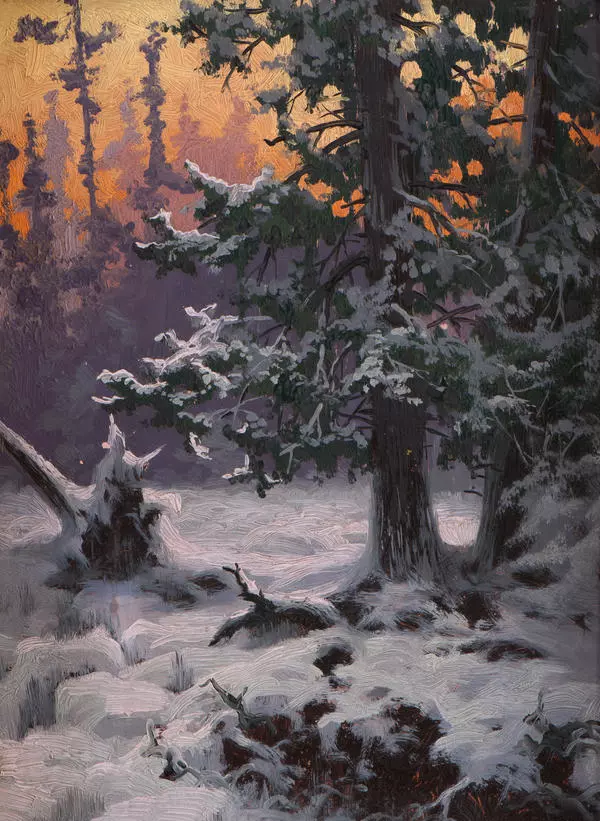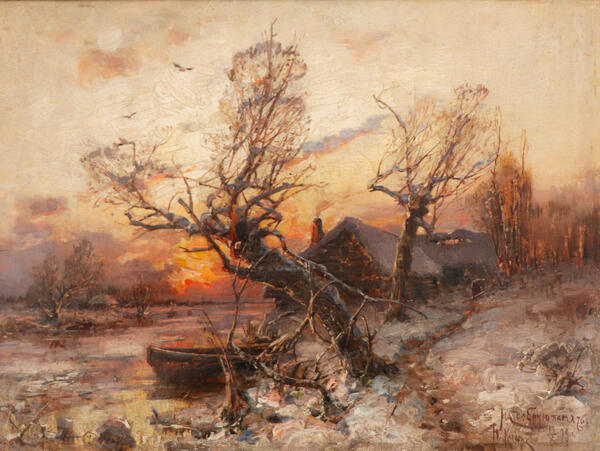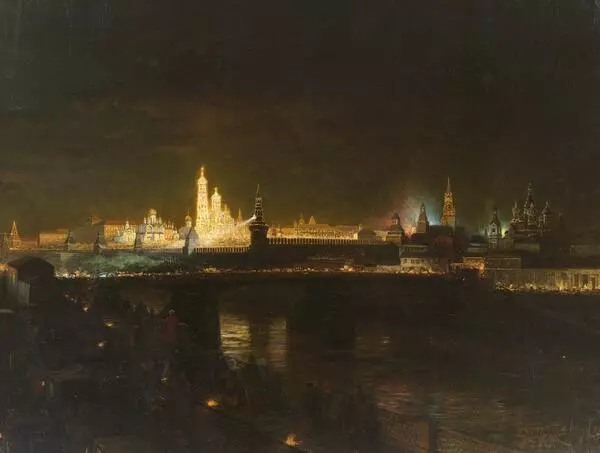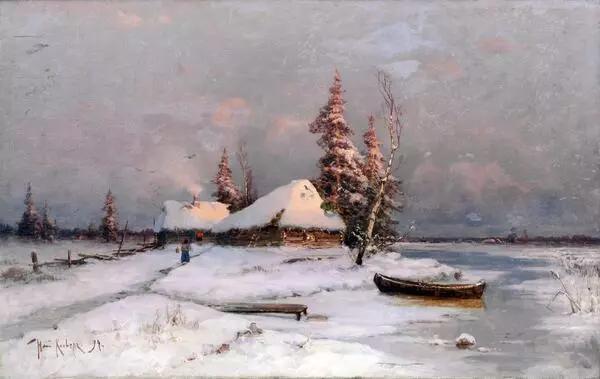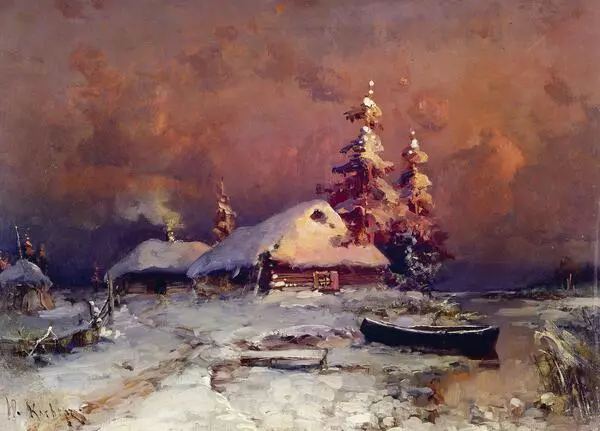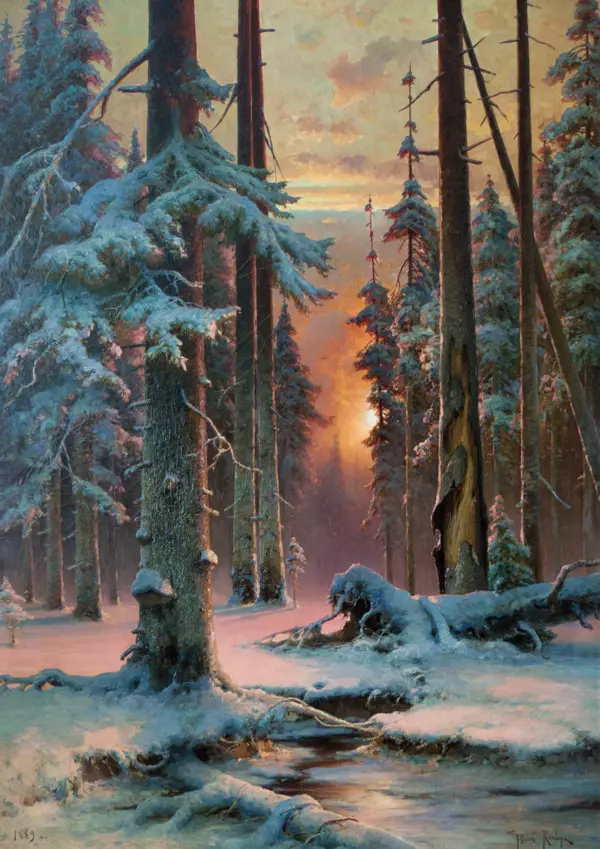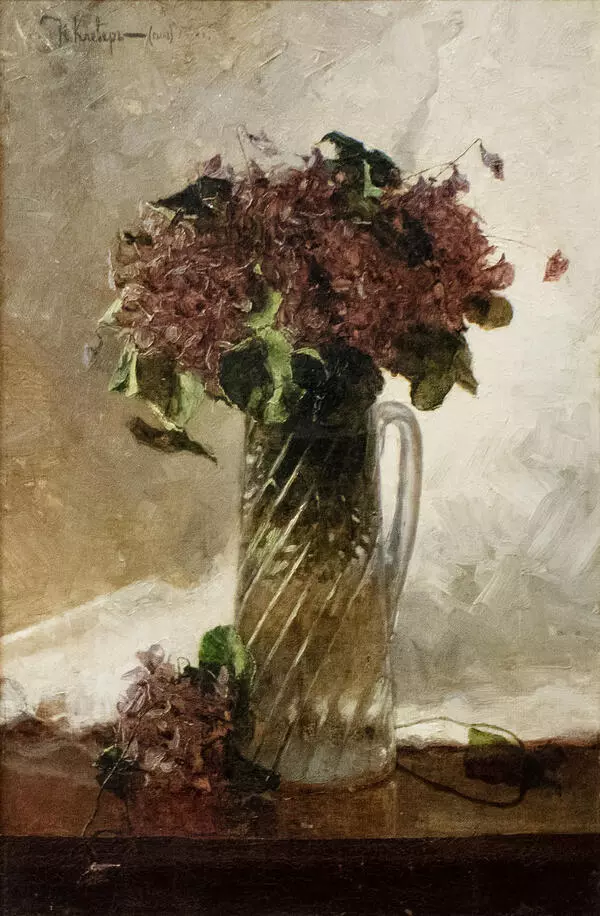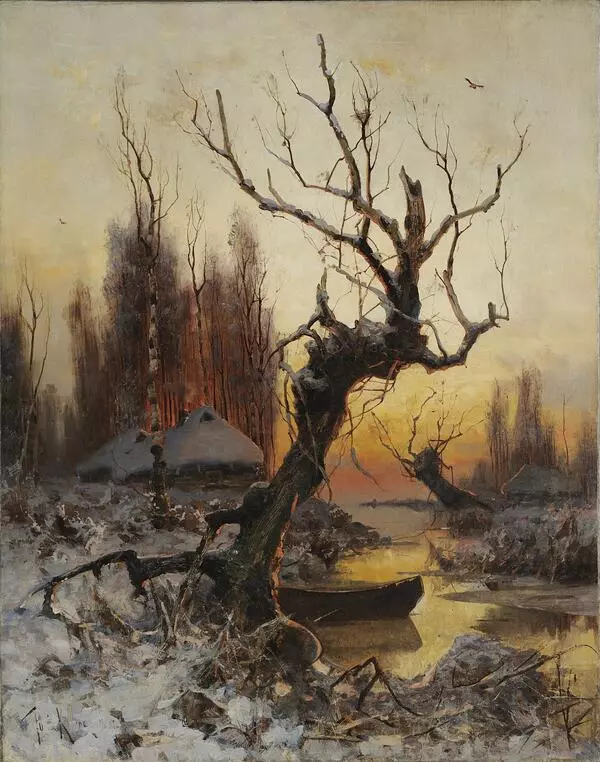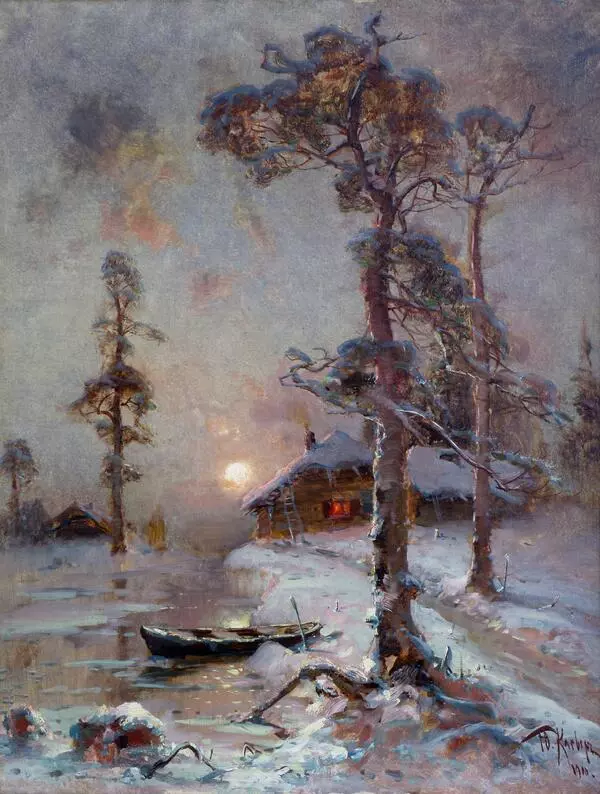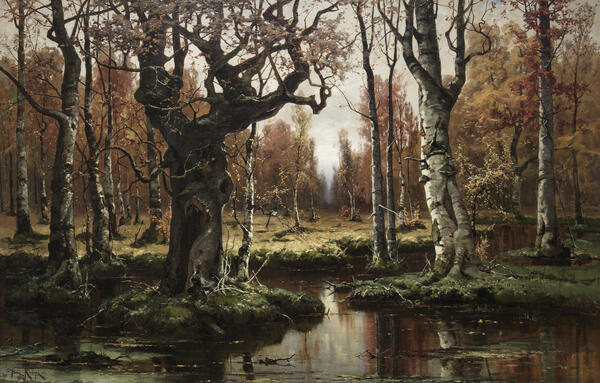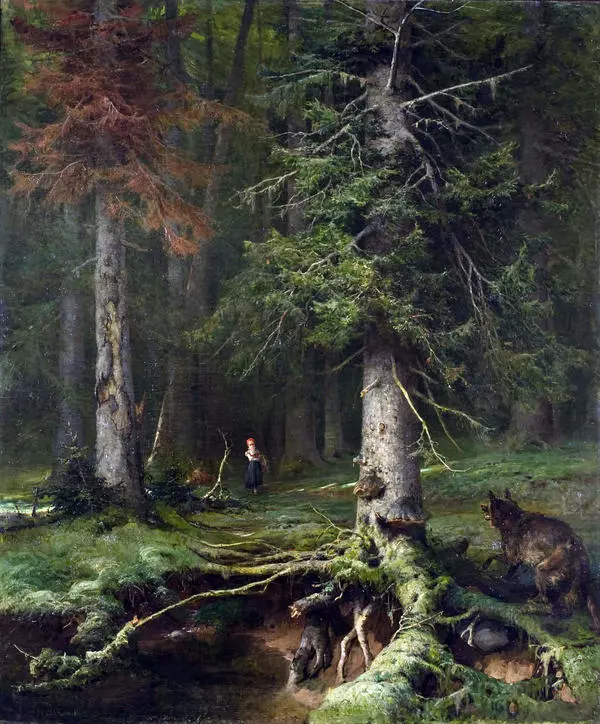Julius Yulievich Klever was a Russian artist of German origin, who received recognition as a landscape painter of the salon-academic kind. He was born on January 19, 1850 into the family of the Master of chemistry, teacher Julius Klever. From childhood, the future artist showed a penchant for drawing and in 1867, after graduating from the Dorpat Gymnasium, he began studying at the architectural classes of the Imperial Academy of Arts. Soon he transferred to the landscape class where he studied first with Socrates Vorobyov and then with Mikhail Klodt. Klever received Small and Grand silver medals from the Academy of Arts.
After Tsar Alexander II wished to purchase the Klever painting “Birch Forest” in 1876, the artist, who had not yet completed an academic course, was awarded the title of class artist of the first degree, and in 1878 he received the title of academician of painting for his work “Old Park” (“View of the Abandoned Park in Marienburg”).
Gradually, the artist developed his own recognizable style, unlike any other — sometimes pretentiously decorative, with spectacular sunsets and vibrant natural combinations of colors.
In the painting “Snow in Forest”, the tall foreground trunks of pine trees go far into the distance, and the setting winter sun shines through them, casting reddish rays on the branches and the ground covered with snow. In the center, a pine trunk lies on the ground, damaged by the storm. The gnarled trunks of old trees rise above swamps and snowdrifts and are clearly outlined against the background of a fiery sunset, the fading light of which gives the whole composition an alarming intonation.
Julius Klever’s landscapes were widely known, but
there were also those who found the artist’s paintings decorative and even
classified them as kitsch. The writer Ivan Bunin has a story “Miss Clara” from
the famous collection “Dark Alleys.” His main character is a sensual, vulgar
woman who is used to living at the expense of rich gentlemen. As a touch
designed to show this vulgarity, Bunin places a landscape of Klever into the
interior of the scene,
